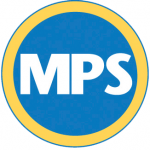The Game and The Players
Understanding the discussion around Milwaukee transit requires an understanding of who has the keys to unlock the federal funds to improve and expand the existing system. We need to lay some groundwork before any discussion on the actual proposals can start.
The Game
There is one primary reason there is a serious debate going on in Milwaukee about improving transit, and that is because there are federal funds already designated for transit in Milwaukee. The Journal Sentinel has provided a good overview of the history of those funds…
In 1991, Congress set aside $289 million to build a bus-only highway parallel to I-94. After state officials pulled the plug on that project, the federal government took away $48 million, and state and local officials have studied, debated – and ultimately rejected – other ways to use the rest of the money, including a light rail system, bus-and-car-pool lanes on the freeway, expanded bus service and guided electric buses. A 1999 deal diverted $149.5 million to road, bridge and pedestrian projects, leaving $91.5 million for a transit project.
The deal mentioned that diverted $149.5 million included funding assistance for the construction of the Marquette Interchange, the 6th Street Viaduct, and Canal Street.
So that $91.5 million can easily be spent by a simple vote of our elected officials, right? Wrong. In fact, the way access to the money is set up only four individuals have control, locally, of how the money can be spent.
Making an agreement more difficult, the money can only be spent on capital improvements, new buses or new infrastructure (be it rail or bus). This isn’t a huge hurdle until you consider the Public Policy Forum analysis that concludes the Milwaukee County Transit System will have a budget shortfall of $18.3 million in 2010 and $23.7 million in 2011. It gets worse…
Since 2001, nearly $40 million of a $44 million reserve of federal capital funds has been allocated by the county to fill holes in MCTS’ operating budget and avoid significant service cuts. At the same time, bus purchases have been deferred to allow for the expenditure of those reserves on operations. The elimination of the reserve and the looming need to replace at least 150 buses sets up an ominous fiscal crisis.
In summary…
They can accept a transit system that is a shell of its former self – one that contains no freeway flyer service, few night and weekend options, and sparse service west of 76th Street, south of Oklahoma Avenue or north of Silver Spring Drive – or they can consider one or more selections from a difficult menu of policy options that could either delay the day of reckoning once again, or perhaps prevent it altogether.
So you have “free” money to the tune of $91.5 million, tempting some to float proposals for using it to patch up the operating budget for MCTS. That certainly won’t be possible this time; it will have to be spent on capital improvements, not operating costs.
What will have to be done? Any proposal put forth by any of “the players” will not only have to include a plan for integrating any new mode of transit with the existing system, but will also have to include some framework for fixing the current transit funding crisis. In all reality this is going to need to be in the form of a sales tax or property tax increase. But how much of an increase?
It’s not likely that political support could be found for a proposal that adds a new express level of service to the transit offerings without also addressing funding for the most basic level of service.
“The game” is complicated.
To make things worse, “the players” can’t seem to agree on anything. Who are “the players”?
The Players
The players consist of four locally influential figures who represent various organizational units. The way the federal funds are structured places power in the offices of these individuals, rather than in the organizations they represent (which isn’t to say the organizations they represent have no power at all in this process). So, while you would expect the City of Milwaukee and Milwaukee County would have to sign off on any deal, that is actually not the case. The Mayor of Milwaukee and the Milwaukee County Executive have to sign off. All four of the players will have to agree to the same plan for the federal government to release the funds. A simple majority will not work.
The end result of the structure of the federal funds allotment and the political shake-up is that you have a proud Democrat in one office and a proud Republican in the other who must agree to the same plan.
The players are…
Mayor of Milwaukee – Tom Barrett: Mayor Barrett proposes splitting the money with County Executive Scott Walker. His proposals to-date have included mixed-modes, including a streetcar starter system and an express bus system. It is important to note that the current Milwaukee Country Transit System is not under his control (nor that of anyone else in Milwaukee City Hall). Barrett is a Democrat and in his second term as Mayor. It is unknown whether he has ambitions to run for Herb Kohl‘s Senate seat after Kohl eventually retires, but that could be a factor when party lines get drawn deeper. Barrett formerly represented Milwaukee in the U.S. House of Representatives and in the state legislature.
Milwaukee County Executive – Scott Walker: County Executive Walker favors spending the money exclusively on a bus system. Walker is a Republican, a potential candidate for Governor in 2010, and was recently re-elected County Executive. He has opposed any tax increase (be it property or sales) at almost every juncture during his time in office. Walker has not supported further study of the proposals put forth by Barrett.
Wisconsin Center District CEO – Richard A. Geyer: Geyer represents the Wisconsin Center District which operates the Midwest Airlines Center, US Cellular Arena, and Milwaukee Theatre. To-date he has supported further study of proposals put forth by Mayor Barrett.
A little background on the Wisconsin Center District…
WCD receives no property tax money or State subsidy. Its funding comes from operating revenues and special sales taxes on hotel rooms, on prepared food and drinks generally sold in restaurants and taverns, and on car rentals. Within the boundaries of Milwaukee County, WCD collects 2% on rooms, 3% on car rentals, and 0.25% on food and beverage sales. It also receives a 7% hotel room tax formerly collected by the City of Milwaukee. These visitor taxes primarily repay a $185 million bond issue that funded the Midwest Airlines Center project.
Metropolitan Milwaukee Association of Commerce President – Tim R. Sheehy: Sheehy has been with the association since 1983. To-date he has supported further study of proposals put forth by Mayor Barrett.
Other Elected Officials – Even if these first four players do come to an agreement, there remains another hurdle to cross. The proposal to the federal government to get the funds must be accompanied by some local funding. That could come from the state level, that could come locally, or it may be that a substantial portion could be raised privately. One way or another though, other elected officials are going to have to be involved in this process. Barrett and Walker can make the wheels start turning, but other officials are going to needed to keep them rolling.
One thing worth nothing when it comes to discussing local/state funding is that the recently remodeled Milwaukee Amtrak Station (now the Milwaukee Intermodal Station) will most likely count as local funding. In almost all proposals to-date it has served as the anchor point, and represents a significant capital investment that won’t have to be remade when and if Milwaukee ever spends the $91.5 million.
Next Up
The next article will be focused on understanding the different transit technologies. How many of you know the difference between a street car system and a light rail system? And what is bus-rapid transit?
The follow-up to to that will be examining the current proposals put forth, including one by outsider Michael Cudahy. This will include a look at funding options.
The final piece will be the recommendations of UrbanMilwaukee and a look at the effects of transit-orientated seen elsewhere.
Political Contributions Tracker
Displaying political contributions between people mentioned in this story. Learn more.
- June 21, 2018 - Tom Barrett received $3,000 from Michael Cudahy
- February 3, 2016 - Tom Barrett received $400 from Tim Sheehy
- July 9, 2015 - Tom Barrett received $3,000 from Michael Cudahy

















One of the saddest things about this story is how much money has been wasted by doing nothing. Since the funds don’t earn any interest, that $91M is the exact same $91M as it was 17 years ago. With inflation, that sum is equivalent to $143M in today’s dollars. Ouch.
(raises hand) me me i know the diff between streetcars/lightrail/BRT!
good point Tad…